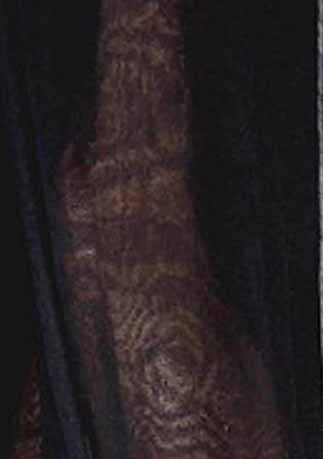
In apothecial structure, and so far as known, in structure of the sexual reproductive areas, the family seems to be closely related. With the advance in these two directions has gone a slightly increased development of the thallus. In structure, the thallus is crustose, and the thalli vary from inconspicuous, evanescent conditions to those which are conspicuous and sometimes even subsquamulous. Rarely the thallus extends upward as a veil which surrounds the apothecia laterally and suggests how the thalloid exciple of higher families probably arose. As usual in crustose forms, the thalli are composed of hyphae. The apothecial evolution passes from forms with weak, light-colored exciples and soft texture to those with strong, dark exciples, which are firm in texture. The superficial apothecial characters are so much alike that one cannot always feel the genus of unfamiliar forms. The paraphyses are commonly distinct in young apothecia, but in mature apothecia they are usually more or less gelatinized and coherent. In some, they become so gelatinized that they form a homogeneous mass about the asci, in which the individual paraphyses are no longer discernible. When distinct, the paraphyses are sometimes branched, most commonly toward their apices. There is great diversity with respect, the whole range from minute, simple to large, brown, and muriform being found within the family. This condition makes it appear quite possible.
The Ascomycetes of Ohio IV, by Bruce Fink (abridged)